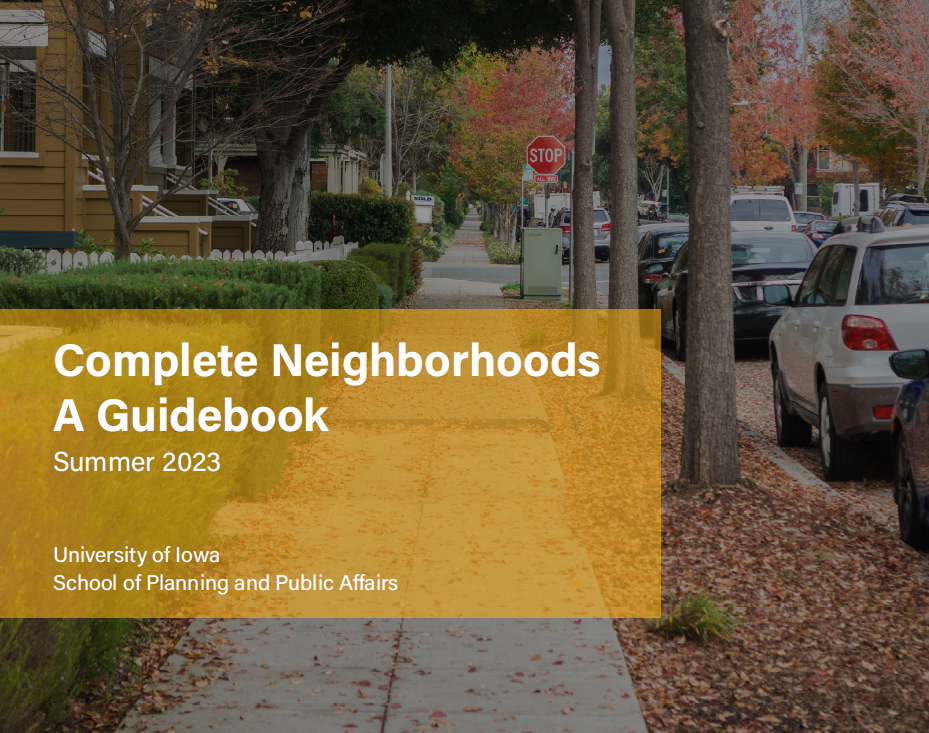Complete Neighborhoods: A Guidebook
As part of their capstone project, students seeking the Transportation Certificate in the School of Planning & Public Affairs created a comprehensive resource for communities to work toward "complete neighborhoods" that provide close access to basic needs. They also applied the Complete Neighborhoods concepts in a collaboration with officials from Cedar Rapids, Iowa.
The Complete Neighborhood concept is one that re-balances streets in favor of people and seeks to restore the closeness of urban life as it began in cities thousands of years ago. The idea is simple and really nothing new: we should have everything we need within a short and safe 15- or 20-minute walk or bike ride of home and office. There should be plenty of options for shopping and dining, and there should be no space wasted.
And, if and when things are farther away, we should be able to hop on a bus or train just as quickly and conveniently as taking our own car.
This paper provides a checklist of all the things a community needs to become complete. The
practices and studies within are intended to assist municipal governments and their citizens in promoting walkability, social cohesion, transit access, equity and diversity, economic opportunity, and more in their neighborhoods. It covers topics such as:
- Using SUPPORTIVE DEVELOPMENT REGULATIONS to allow and incentivize denser residential and commercial development.
- Providing ACCESS TO A MIX OF SHOPS, JOBS, HOMES, AND RECREATION in close proximity to community members.
- FILLING IN THE GAPS to transform empty lots and buildings into community-wide assets • Developing a plan for PARKING REFORM to utilize space for people -- not just cars.
- Prioritizing WALKING AND BIKING for safe, affordable, efficient, healthy, and environmentally friendly trips
- Exercising PEDESTRIAN-SCALE STREET DESIGN & ARCHITECTURE in areas of development that are both safer and more pleasing to the eye.
- Encouraging NEIGHBORHOOD VITALITY & RESILIENCE through recreation and face-toface
socialization. - Devising EQUITABLE DESIGN & POLICY guidelines for people of all ages, colors, abilities, and backgrounds and addressing the diverse needs of disadvantaged groups.
